- 1. Key Takeaways
- 2. History of Railroad Trail
- 2.1. Transportation and Engineering Marvel
- 2.2. Transformation to Hiking Trail
- 2.3. Conservation and Community Effort
- 3. Trail Details
- 3.1. Length and Difficulty
- 3.2. Scenic Spots and Landmarks
- 4. Hiking Tips and Safety Guidelines
- 4.1. Gear and Supplies
- 4.2. Safety Tips
- 4.3. Navigation Tips
- 4.4. Conservation and Etiquette
- 5. Historical Railroad Trail Reviews
- 6. Final Thoughts
- 7. FAQs
- 7.1. What is the length of the Historic Railroad Hiking Trail?
- 7.2. Can you see Hoover Dam from the Historic Railroad Hiking Trail?
- 7.3. Are the railroad tunnels along the trail accessible to hikers?
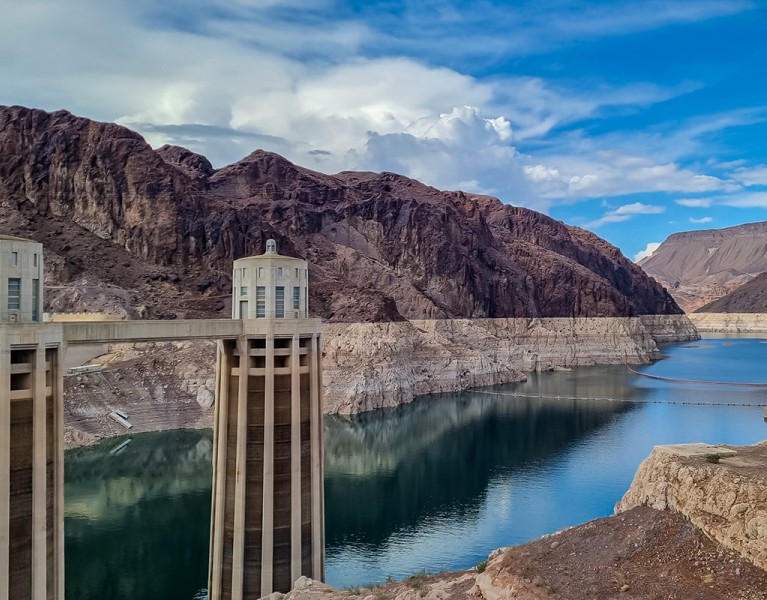
Exploring the Historic Railroad Hiking Trail
Table of Contents [Show]
Stepping onto the Historic Railroad Hiking Trail is like walking through a time portal, where each step echoes the strides of workers who once laid the tracks connecting Boulder City to the mighty Hoover Dam. This trail, carved through Nevada's rugged terrain, offers adventurers a unique blend of natural beauty, history and engineering marvel. Winding along Lake Mead's picturesque shores, it passes through the same tunnels once used to transport materials for the dam's construction, now standing as silent guardians of the past. Accessible and inviting, the trail beckons hikers of all levels to discover its scenic vistas and historic tunnels, providing a tangible link to the era that transformed the American West.
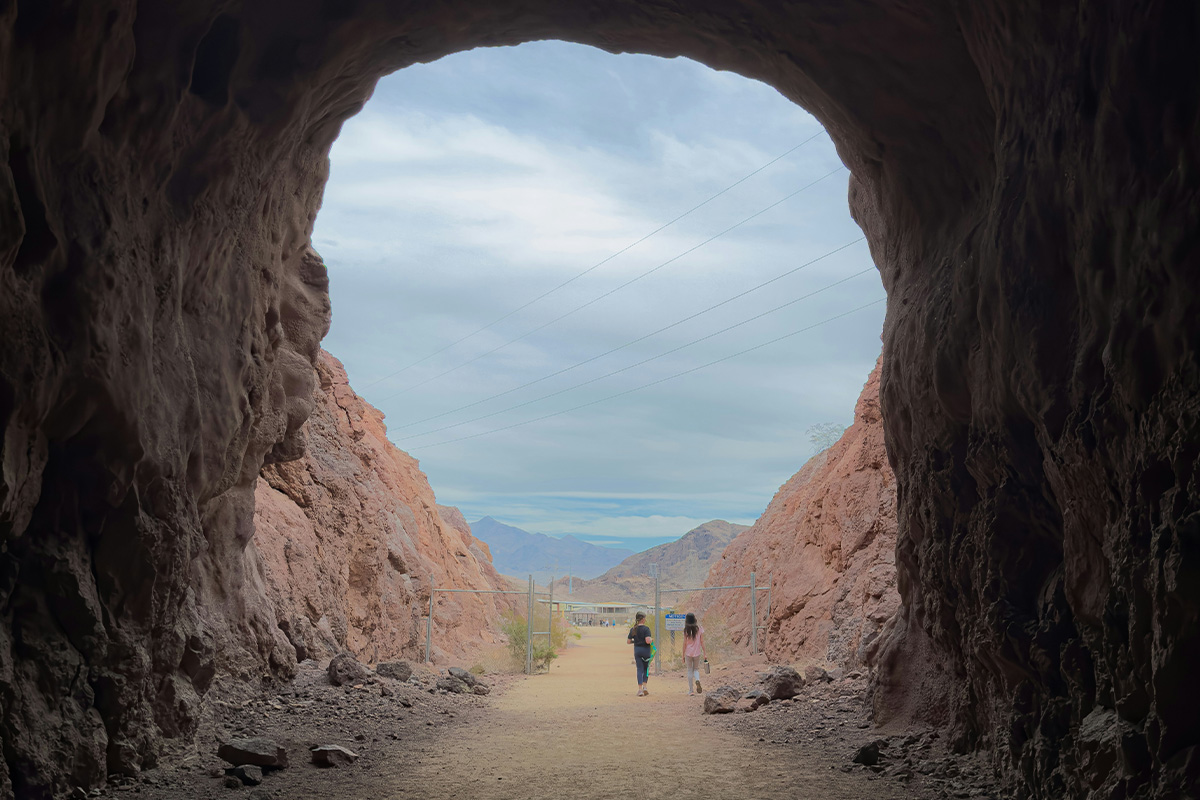
Key Takeaways
- Historical Significance: The trail offers a unique journey through history, tracing the path once used to transport materials for the Hoover Dam's construction.
- Natural Beauty: Hikers can enjoy stunning views of Lake Mead, surrounding desert landscapes and geological formations along the trail.
- Accessibility: Suitable for hikers of all levels, the trail is well-maintained, offering an easy to moderate hiking experience with clear markers and information plaques.
- Scenic Landmarks: The trail features original railroad tunnels that provide cool respite and a glimpse into the past, as well as spectacular views of the Hoover Dam and Memorial Bridge.
- Conservation and Etiquette: Emphasis on the importance of preserving the trail's natural and historical integrity, encouraging hikers to adhere to leave-no-trace principles and respect the trail's heritage.
History of Railroad Trail
Transportation and Engineering Marvel
The Historic Railroad Trail has a storied past that dates back to the early 20th century. Serving as a critical transportation route for the construction of the Hoover Dam, it was one of the United States' most significant engineering feats. Initially, this trail was part of a larger railroad system that transported countless tons of materials and workers directly to the dam site, playing an indispensable role in its construction. This railroad was not only a marvel of engineering but also a lifeline that connected the remote construction area with the rest of the country, facilitating a steady flow of materials and manpower necessary to complete the monumental project.
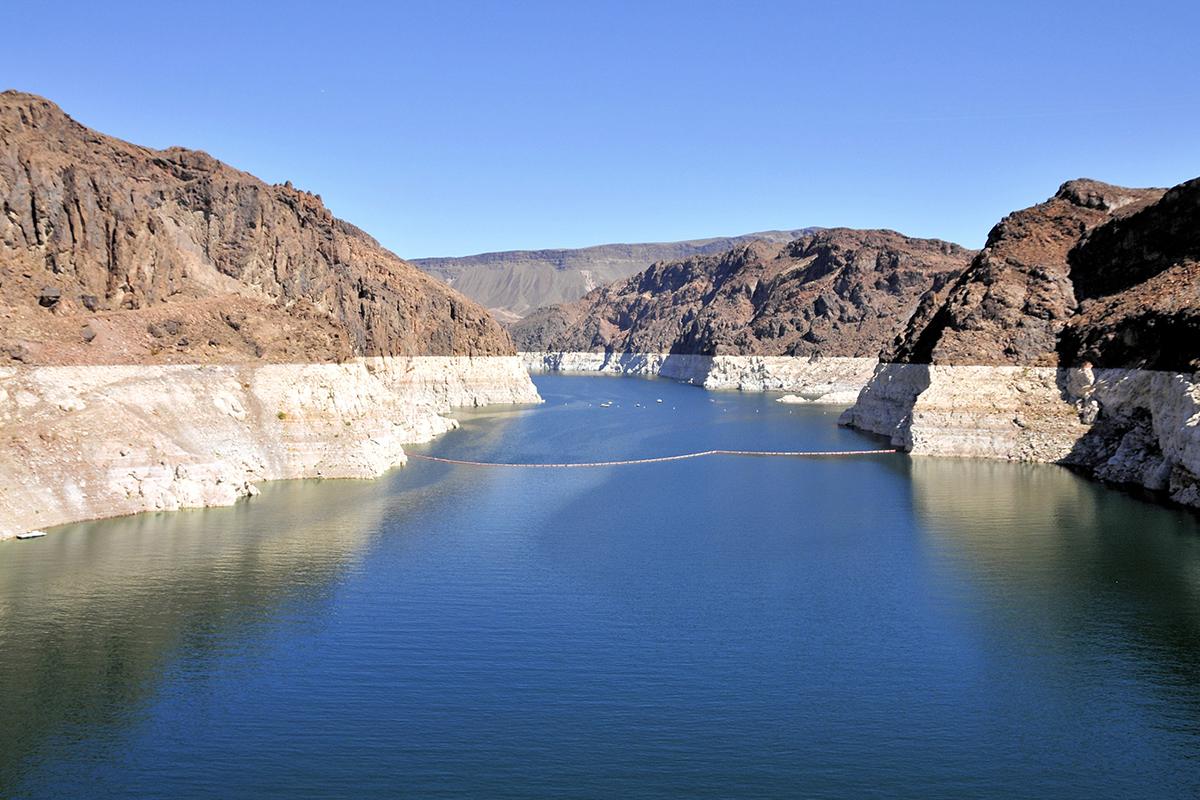
Transformation to Hiking Trail
As the years passed and the construction of the Hoover Dam concluded, the once bustling railroad lines fell silent, and the tracks were eventually dismantled. However, the path they carved through the desert landscape remained, serving as a symbol of the human effort and the historical importance of the area. Recognizing the potential for these defunct railroads to serve a new purpose, conservationists and community members rallied to transform these remnants of the past into recreational trails. This transformation was driven by a desire to preserve the historical and natural heritage of the area while providing the public with access to its stunning landscapes and historical context.
Conservation and Community Effort
Through dedicated conservation efforts and community involvement, the Historic Railroad Trail was born. These efforts have not only safeguarded the trail's historical artifacts, such as the original tunnels, but have also highlighted the importance of preserving natural landscapes for future generations. Today, the trail stands as a symbol of how obsolete railroads – once vital arteries of commerce and transportation – can find new life as pathways for exploration, education and enjoyment, bridging the gap between past and present.
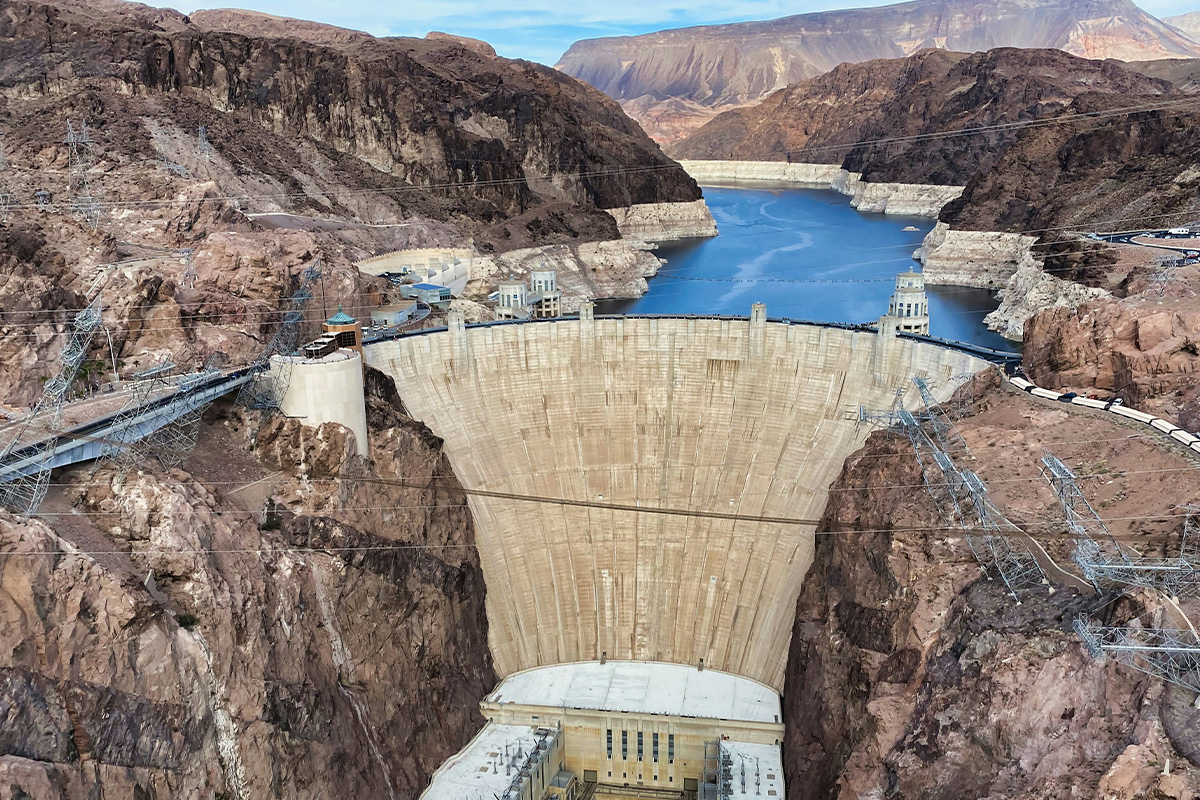
Trail Details
Length and Difficulty
The Historic Railroad Hiking Trail, stretching between Boulder City and Hoover Dam, is a scenic journey through time and nature. This 3.7-mile (one way) trail is characterized by its gentle grade and historic significance, making it accessible for hikers of all skill levels, from families looking for a leisurely walk to more seasoned hikers interested in the area's history and natural beauty.
Scenic Spots and Landmarks
Starting from the trailhead in Boulder City, the path takes you through arid terrain, offering panoramic views of Lake Mead and the surrounding mountains. The trail's most notable features are the five large tunnels, each about 300 feet in length, originally constructed for the transportation of materials during the building of Hoover Dam in the 1930s.These tunnels, carved directly into solid volcanic rock, showcase the remarkable engineering achievements of the dam's construction era.
As you progress towards Hoover Dam, the trail provides various vantage points for photography enthusiasts and nature lovers to capture the stunning scenery. The path concludes at the dam itself, where hikers can explore the marvels of this iconic structure, including the Mike O'Callaghan–Pat Tillman Memorial Bridge. This bridge offers an impressive overlook of the dam and the Colorado River, providing a fitting end to the trail with its breathtaking views.
The Historic Railroad Trail not only offers an easy and enjoyable hike but also serves as a trip through the history of the Hoover Dam and the transformation of the American West. It's a unique blend of natural beauty and historical exploration, making it a must-visit for anyone in the area.
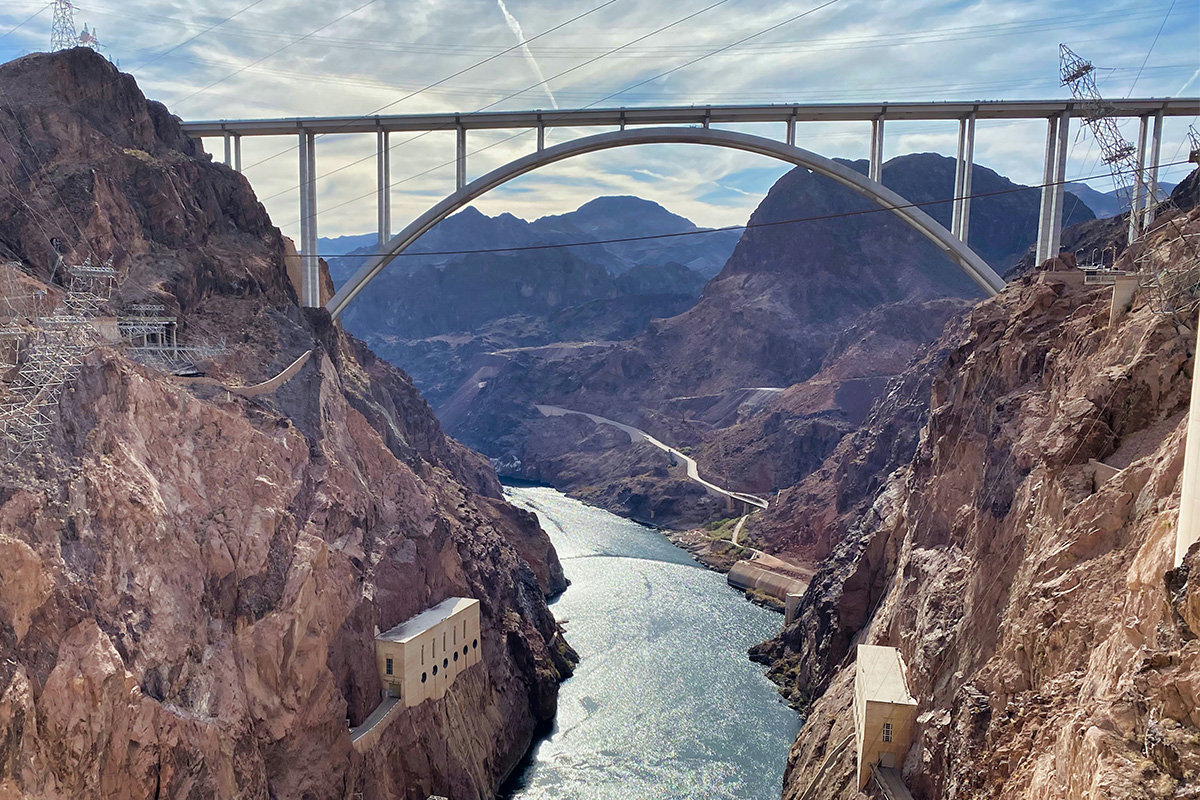
Hiking Tips and Safety Guidelines
To have a successful and safe hike on the Historic Railroad Hiking Trail, it's important to come prepared and follow guidelines specific to the trail's distinct features and its historical importance. Here are a few tips to keep in mind before your adventure:
Gear and Supplies
- Footwear: Durable hiking shoes with good traction are essential due to the trail's gravelly sections and occasional rocky terrain.
- Water and Snacks: Carry ample water, especially in warmer months, as the trail offers little shade. Energy-boosting snacks can help maintain your stamina.
- Sun Protection: A hat, sunglasses and sunscreen are vital under the often-unrelenting Nevada sun.
- Layered Clothing: Weather can change, so layered, breathable clothing allows for adjustments. The mornings can be cool, heating up significantly by midday.
Safety Tips
- Remain Alert: While the tunnels and trail are safe, it's essential to be mindful of the uneven surfaces and any remnants of the railroad infrastructure.
- Wildlife Encounters: The area is home to various wildlife; maintain a safe distance, and do not feed animals.
- Respect Private Property: Portions of the trail border private lands. Stay on marked trails to avoid trespassing.
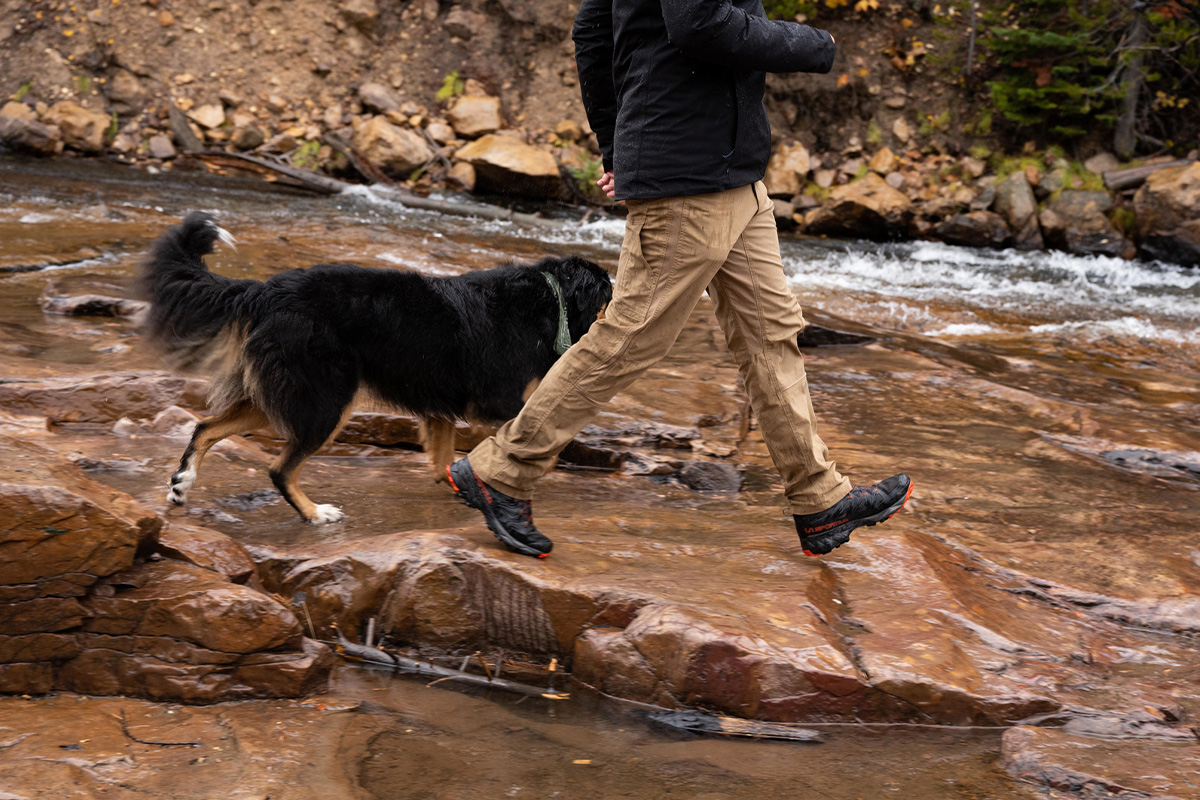
Navigation Tips
- Trail Apps: Utilize hiking apps to stay on course. These apps can provide real-time updates on trail conditions and landmarks. Here’s a list of some of the best hiking apps to help you out.
- Trail Markers: Pay attention to trail markers and signs that provide historical context and directional guidance.
- Trail-Specific Regulations: Familiarize yourself with any specific rules for the Historic Railroad Trail, such as hours of operation and pet policies.
Conservation and Etiquette
- Leave No Trace: Carry out all trash, and leave what you find. The trail runs through sensitive environments and historical sites that require preservation.
- Trail Etiquette: Yield to other hikers where the trail narrows, and keep noise levels down to not disturb wildlife or the enjoyment of others.
- Contribute to Maintenance Efforts: Participate in local clean-up days or donate to organizations that maintain and protect the trail.
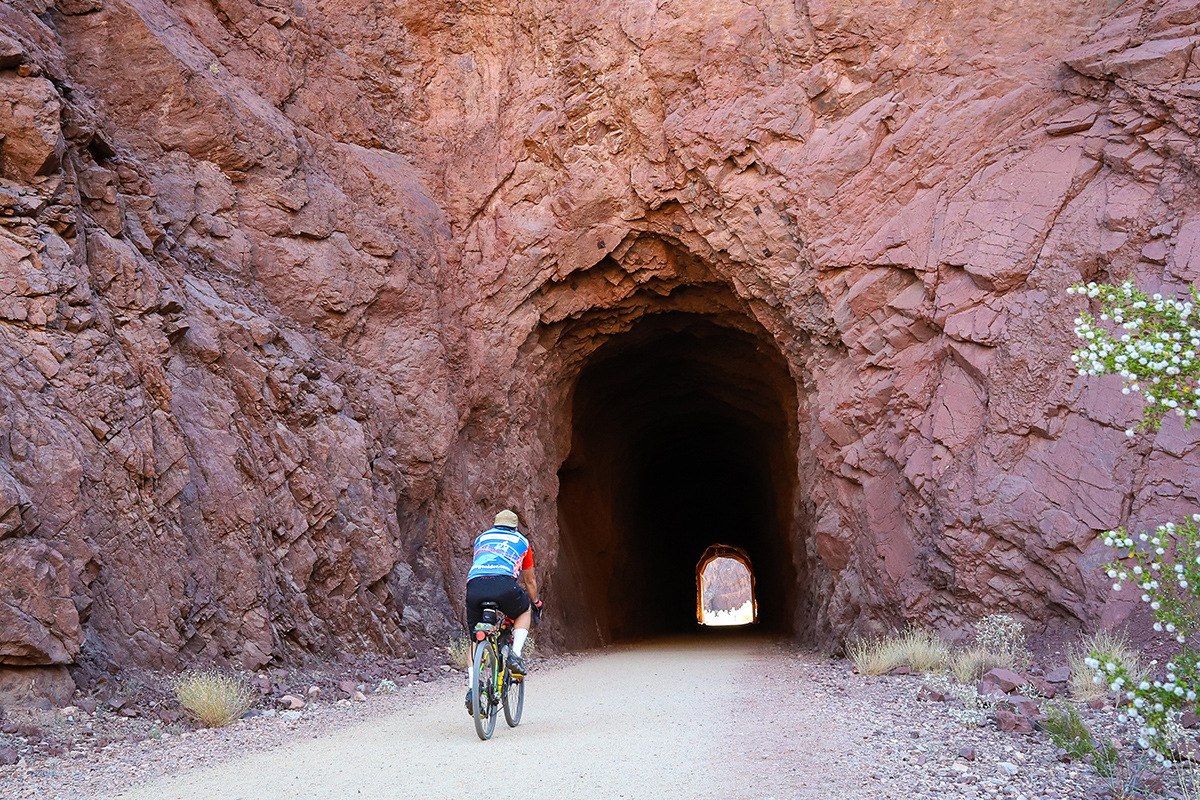
Historical Railroad Trail Reviews
Hikers who have explored the Historic Railroad Trail often highlight several aspects that make this journey memorable:
- Scenic Beauty: Many reviews praise the stunning views of Lake Mead and the surrounding desert landscapes. A reviewer on AllTrails claims, “Scenic vistas continuously along first three miles of the trail. In sum, a rare trail combining beauty, nature, history and ending at one of the world’s iconic engineering achievements in the 20th Century.”
- Tunnel Exploration: The trail's series of tunnels, originally used for railroad transport, are frequently noted as a highlight. Hikers appreciate the cool shade they provide and the echoes of history they represent.
- Family- and Dog-Friendly: Reviewers often mention the trail's accessibility and ease, making it an excellent option for families and hikers of all skill levels. The well-maintained path and gentle grade are suitable for children and less experienced hikers. One reviewer talks about how he and his grandchild love to take their dog for walks on this trail.
- Proximity to Hoover Dam: The opportunity to hike from Boulder City to the Hoover Dam is a significant draw, with many noting the impressive views of the dam and the Colorado River as a rewarding end to the hike.
- Wildlife Encounters: While not as common, some hikers share exciting sightings of local wildlife, including desert bighorn sheep, which adds an extra layer of adventure to the experience. A reviewer on TrailLink wrote, “We rode this on our tandem road bike. Easy ride with great views. We say two desert big horn sheep. Also met some friendly people along the way.”
- Biking: Many reviews claim that this trail is excellent for a quick and easy bike ride. Though, one reviewer states, “I would not take children on bikes because of the steep drop-offs with no guard rails.”
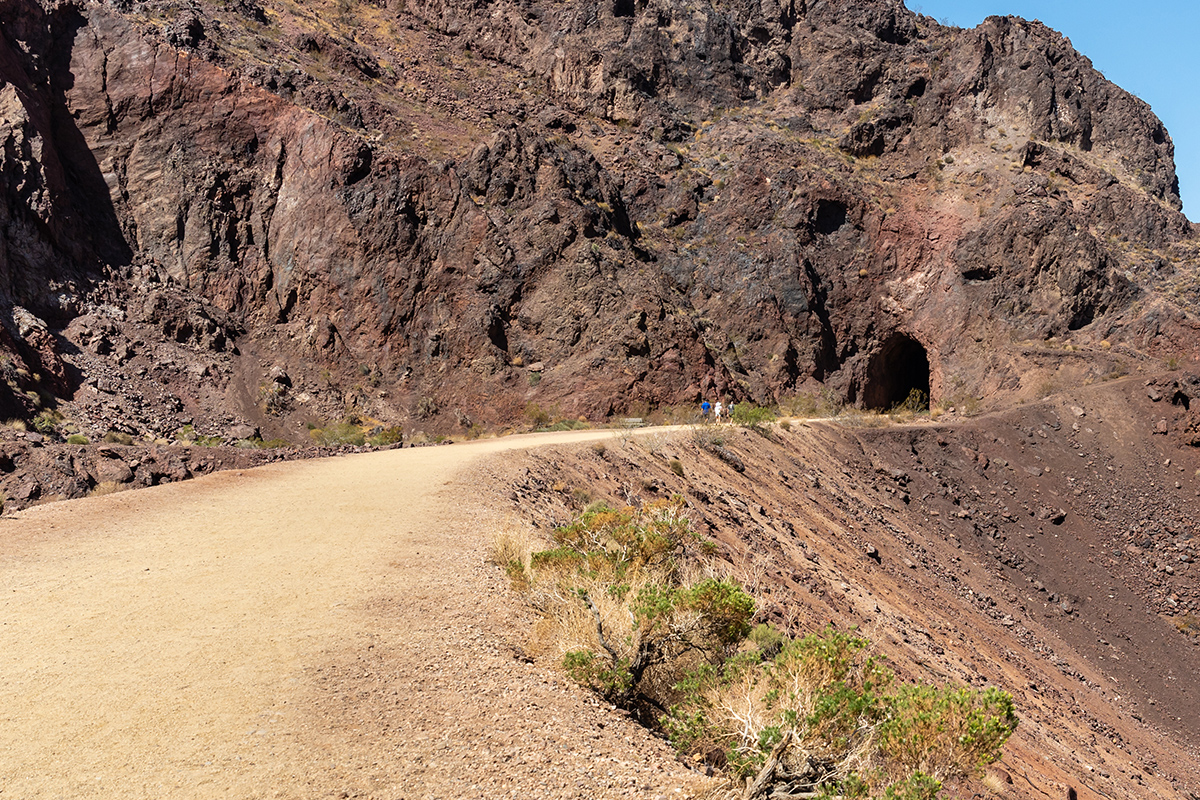
Final Thoughts
The Historic Railroad Hiking Trail captivates with its blend of natural wonders and a storied past, guiding hikers through breathtaking scenes and historical remnants. As it snakes from Boulder City to Hoover Dam, the trail reveals the industrious spirit of its origins and the tranquil beauty of Lake Mead's landscapes. It's a path where the echoes of history meet the timeless grandeur of the desert, offering both a serene escape and a reflective journey through the archives of American engineering. This trail offers a fantastic experience for hikers, bikers and strolling dog walkers, allowing everyone to enjoy the unique beauty of the desert landscape. It's a perfect spot for spending quality time with loved ones while appreciating the natural and historical wonders of the area.
Featured image by: Chris.
FAQs
What is the length of the Historic Railroad Hiking Trail?
The Historic Railroad Hiking Trail stretches approximately 3.7 miles one way, making for a round-trip distance of about 7.4 miles. This trail offers a relatively easy hike, suitable for all ages and skill levels. It is also popular for biking and walking with dogs.
Can you see Hoover Dam from the Historic Railroad Hiking Trail?
Yes, the Historic Railroad Hiking Trail offers spectacular views of Hoover Dam, particularly as you approach the trail's end. The trail provides unique perspectives of the dam, Lake Mead, and the surrounding desert landscape, making it a memorable part of the hike.
Are the railroad tunnels along the trail accessible to hikers?
Yes, the historic railroad tunnels along the trail are a major highlight and are fully accessible to hikers. These five large tunnels, carved out of solid rock, were originally constructed for transporting construction materials for Hoover Dam. Now, they serve as an intriguing passageway for trail users, offering a cool respite during warmer months and a glimpse into the area's industrial past.


